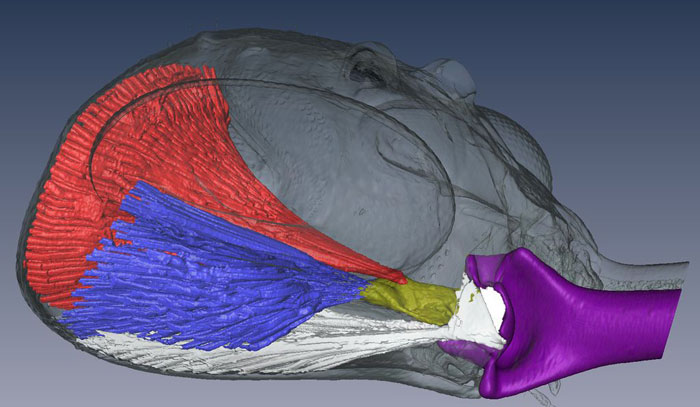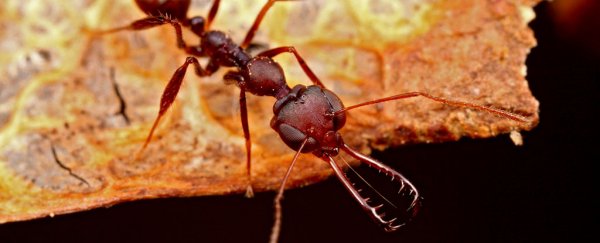A prey-killing mechanism so imperceptibly deadly it evolved at least five times in different kinds of ants has been caught on camera by scientists – just barely.
Myrmoteras, a rarely seen genus of trap-jaw ants from South-East Asia, snap their jaws shut on unsuspecting prey at speeds of up to 80 kilometres per hour (50 mph). At least you could say the end came quickly.
Now, for the first time, scientists can explain how that devastating trap-jaw unleashes its attack, which takes place in just half a millisecond – about 700 times faster than you can blink.
The secret, according to entomologist Frederick Larabee from the Smithsonian National Museum of Natural History, is the way Myrmoteras hold their jaws open at a broad 280-degree angle – storing up elastic energy that gets suddenly released in a virtually invisible strike.

"What's interesting is that the arrangement of the muscles and how the jaws are locked open are completely different from other trap-jaws ants that have been studied," says Larabee.
"It seems like it's a completely unique evolution of this system."
In the case of Myrmoteras, the mechanism is made possible by the ant's mandible joint. A lobe on the back of the head compresses, which enable the spring-loaded trap to be set, and the jaw is then loosed by a fast-contracting trigger muscle.
When that happens, it's game over for any springtails, the ants' primary prey, who happen to be in the wrong place at the wrong time.
To deduce how the trap-jaw swings, Larabee and fellow researcher Andrew Suarez from the University of Illinois at Urbana-Champaign peered inside Myrmoteras skulls by way of a micro-CT scan, which revealed the inner structure of the jaw and muscles involved.
 Fredrick Larabee et al.
Fredrick Larabee et al.
In the micro-CT image above, you can see how the trap-jaw structures take up a significant portion of the ant head.
The blue, red, and white portions are all muscles that operate the jaw (or mandible), which is depicted in purple. Specifically, the white is the mandible opener muscle, while the blue and red are respectively fast and slow muscles that close the jaw.
Catching the actual death strike in motion took a different approach – with the researchers needing a super high-speed camera, capable of capturing 50,000 frames per second, in order to glimpse the moment the trap-jaw shuts.
According to the researchers, the elastic energy-trapping system enables the trap-jaw to shut significantly faster than if the jaws relied on muscle power alone – but as formidable as Myrmoteras's clamping stats are, it's not the fastest draw in the west.
That honour is bestowed upon a different genus of trap-jaw ant, the distantly related Odontomachus – whose jaw swings with twice the speed.
Not that Myrmoteras ought to feel too bashful about things. For any springtails who happen to look at these killer ants the wrong way, the end result will almost certainly be the same.
"They just need to be faster than the critters they're trying to eat, and their jaws are plenty fast for capturing springtails," Larabee says.
That said, the fact that this kind of evolutionary mechanism developed at all in Myrmoteras and other trap-jaw ants suggests that, once upon a time, they needed super speed to get a hold of their fidgety springtail dinner.
Otherwise, they ran the risk of going hungry to the point of extinction – in which case we wouldn't be able to study them today.
"You end up with these arms races between predators and prey," Larabee explained to Ryan P. Smith at Smithsonian.
"If you're a gazelle, you have to run fast, and that means the cheetah's going to run even faster. And I suspect that having prey that are able to escape very quickly is a good pressure to select for these really fast predators."
The findings are reported in the Journal of Experimental Biology.
